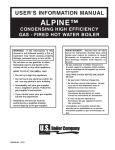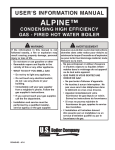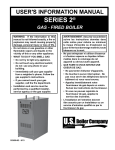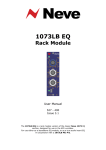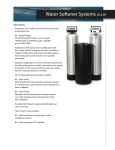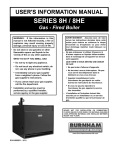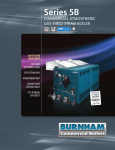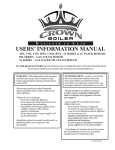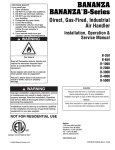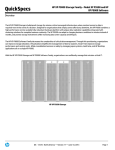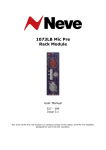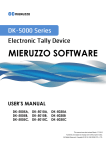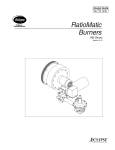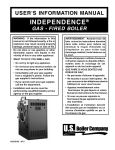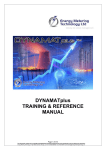Download User Manuals
Transcript
USER'S INFORMATION MANUAL SERIES 5B Gas - Fired Boiler WARNING: If the information in this manual is not followed exactly, a fire or explosion may result causing property damage, personal injury or loss of life. - Do not store or use gasoline or other flammable vapors and liquids in the vicinity of this or any other appliance. WHAT TO DO IF YOU SMELL GAS • Do not try to light any appliance. • Do not touch any electrical switch; do not use any phone in your building. • Immediately call your gas supplier from a neighbor's phone. Follow the gas supplier's instructions. • If you cannot reach your gas supplier, call the fire department. - Installation and service must be performed by a qualified installer, service agency or the gas supplier. AVERTISSEMENT. Assurez-vous de bien suivre les instructions données dans cette notice pour réduire au minimum le risque d'incendie ou d'explosion ou pour éviter tout dommage matériel, toute blessure ou la mort. - Ne pas entreposer ni utiliser d'essence ni d'autres vapeurs ou liquides inflam-mables dans le voisinage de cet appareil ou de tout autre appareil. QUE FAIRE SI VOUS SENTEZ UNE ODEUR DE GAZ: • Ne pas tenter d'allumer d'appareils. • Ne touchez à aucun interrupteur. Ne pas vous servir des téléphones dans le bâtiment où vous vous trouvez. • Appelez immédiatement votre fournisseur de gaz depuis un voisin. Suivez les instructions du fournisseur. • Si vous ne pouvez rejoindre le fournisseur de gaz, appelez le service des incendies. - L'installation et I'entretien doivent être assuréx par un installateur ou un service d'entretien qualifié ou par le fournisseur de gaz. BOILER NOT FOR INSTALLATION ON COMBUSTIBLE FLOORS UNLESS FLOOR SHIELD OR NATIONAL BUILDING CODE APPROVED MATERIALS ARE INSTALLED BETWEEN BOILER AND FLOOR. Commercial Boilers www.burnhamcommercial.com 8141303R6 - 8/15 The following terms are used throughout this manual to bring attention to the presence of hazards of various risk levels. Indicates a potentially hazardous situation which, if not avoided, could result in death, serious injury or substantial property damage. Indicates a potentially hazardous situation which, if not avoided, may result in moderate or minor injury or property damage. Important Product Safety Information Refractory Ceramic Fiber Product The Repair Parts list designates parts that contain refractory ceramic fibers (RCF). RCF has been classified as a possible human carcinogen. When exposed to temperatures above 1805°F, such as during direct flame contact, RCF changes into crystalline silica, a known carcinogen. When disturbed as a result of servicing or repair, these substances become airborne and, if inhaled, may be hazardous to your health. AVOID Breathing Fiber Particulates and Dust Precautionary Measures: Do not remove or replace RCF parts or attempt any service or repair work involving RCF without wearing the following protective gear: 1. A National Institute for Occupational Safety and Health (NIOSH) approved respirator 2. Long sleeved, loose fitting clothing 3. Gloves 4. Eye Protection • • • • Take steps to assure adequate ventilation. Wash all exposed body areas gently with soap and water after contact. Wash work clothes separately from other laundry and rinse washing machine after use to avoid contaminating other clothes. Discard used RCF components by sealing in an airtight plastic bag. RCF and crystalline silica are not classified as hazardous wastes in the United States and Canada. First Aid Procedures: • • • • 2 If contact with eyes: Flush with water for at least 15 minutes. Seek immediate medical attention if irritation persists. If contact with skin: Wash affected area gently with soap and water. Seek immediate medical attention if irritation persists. If breathing difficulty develops: Leave the area and move to a location with clean fresh air. Seek immediate medical attention if breathing difficulties persist. Ingestion: Do not induce vomiting. Drink plenty of water. Seek immediate medical attention. Basic Operation Should overheating occur or the gas supply fail to shut off, do not turn off or disconnect the electrical supply to the pump. Instead, shut off the gas supply at a location external to the appliance. En cas de surchauffe ou si I'admission de gaz ne peut étre coupée, ne pas couper ni débrancher l'alimentation électrique de la pompe. Fermer plutôt le robinet d'admission de gaz à l'extérieur de I'appareil. Do not use this boiler if any part has been under water. Immediately call a qualified service technician to inspect the boiler and to replace any part of the control system and any gas control which has been under water. A.General This boiler is equipped with controls for proper operation. All controls must be in proper working order. Contact a qualified service agency to provide annual maintenance as specified in the Installation, Operating and Service Instructions. Service on this boiler should be undertaken only by trained and skilled personnel from a qualified service agency. B. Instructions to place boiler in operation and to turn off boiler are shown on the Lighting or Operating Instruction label posted inside the boiler, behind the front removable door. See Figure 1 for front door removal instructions. Lighting and Operating Instructions are also shown in Figures 2 thru 4. Lighting and Operating Instructions vary with the type of control system furnished. Refer to Table 1 for the appropriate Figure. Figure 1: Removal of Front & Rear Jacket Panels Table 1: Lighting and Operating Instructions IGNITION SYSTEM MODELS USED ON OPERATING INSTRUCTIONS CONTROL LOCATION DIAGRAM EI Intermittent Ignition USA only: 5006B to 5009B Figure 1 Figure 4 EI Intermittent Ignition USA: 5010B to 5026B Canada: All Figure 2 Figure 5 EP Intermittent Ignition USA and Canada: All Figure 3 Figure 6 3 FOR YOUR SAFETY READ BEFORE OPERATING WARNING: If you do not follow these instructions exactly, a fire or explosion may result causing property damage, personal injury, or loss of life. A. This appliance is equipped with an ignition device which automatically lights the pilot. Do not try to light the pilot by hand. B. BEFORE OPERATING smell all around the appliance area for gas. Be sure to smell next to the floor because some gas is heavier than air and will settle on the floor. WHAT TO DO IF YOU SMELL GAS: Do not try to light any appliance. Do not touch any electric switch; do not use any phone in your building. Immediately call your gas supplier from a neighbor's phone. Follow the gas supplier's instructions. If you cannot reach your gas supplier, call the fire department. C. Use only your hand to turn the gas control knob. Never use tools. If the knob will not turn by hand, don't try to repair it, call a qualified service technician. Force or attempted repair may result in a fire or explosion. D. Do not use this appliance if any part has been under water. Immediately call a qualified service technician to inspect the appliance and to replace any part of the control system and any gas control which has been under water. OPERATING INSTRUCTIONS 1. STOP! Read the safety information above on this label. 2. Set the thermostat or operating control to lowest setting. 3. Turn off all electric power to the appliance. 4. This appliance is equipped with an ignition device which automatically lights the pilot. Do not try to light the pilot by hand. POSITION INDICATOR 5. Locate the gas control valve at the end of the gas supply pipe going into the boiler. The gas control GAS knob is the gray or brown INLET plastic knob located on top of the gas control valve. ON OFF 6. Rotate gas control knob clockwise from "ON" position to "OFF". Make sure knob rests against stop. 7. Wait five (5) minutes to clear out any gas. Then smell for gas, including near the floor. If you smell gas, STOP! Follow "B" in the safety information above on this label. If you do not smell gas, go to the next step. 8. Rotate gas control knob counterclockwise from "OFF" to "ON". Make sure knob rests against stop. Do not force. 9. Turn on all electric power to the appliance. 10. Set thermostat or operating control to desired setting. GAS CONTROL KNOB SHOWN IN "OFF" POSITION 11. If the appliance will not operate, follow the instructions "TO TURN OFF GAS TO APPLIANCE" and call your service technician or gas supplier. TO TURN OFF GAS TO APPLIANCE 1. Set the thermostat or operating control to the lowest setting. 2. Turn off all electric power to the appliance if service is to be performed. 3. Rotate gas control knob clockwise from "ON" position to "OFF". Make sure knob rests against stop. 81460028R6 Figure 2: Lighting Instructions, EI Intermittent Ignition System USA Only: 5006B thru 5009B 4 FOR YOUR SAFETY READ BEFORE OPERATING WARNING: If you do not follow these instructions exactly, a fire or explosion may result causing property damage, personal injury, or loss of life. A. This appliance is equipped with an ignition device which automatically lights the pilot. Do not try to light the pilot by hand. B. Do not use this appliance if any part has been under water. Immediately call a qualified service technician to inspect the appliance and to replace any part of the control system and any gas control which has been under water. C. BEFORE OPERATING smell all around the appliance area for gas. Be sure to smell next to the floor because some gas is heavier than air and will settle on the floor. WHAT TO DO IF YOU SMELL GAS: Do not try to light any appliance. Do not touch any electric switch; do not use any phone in your building. Immediately call your gas supplier from a neighbor's phone. Follow the gas supplier's instructions. If you cannot reach your gas supplier, call the fire department. OPERATING INSTRUCTIONS 1. STOP! Read the safety information above on this label. 2. Set the thermostat or operating control to lowest setting. 3. Turn off all electric power to the appliance. 4. This appliance is equipped with an ignition device which automatically lights the pilot. Do not try to light the pilot by hand. 5. Make sure the manual main shut-off valve(s) and pilot valve(s) have been shut off for at least five minutes. shut-off for at least five minutes. Then smell for gas, including near the floor. If you smell gas, STOP! Follow "B" in the safety information above on this label. If you do not smell gas, go to the next step. 6. Turn manual main shut-off valve(s) and pilot valve(s) to "ON" position. 7. Turn on main electric switch. 8. Set thermostat or operating control to desired setting. Make sure that all limit controls have been set for normal system operating requirements. Pilot will automatically ignite main burners on each call for heat. TO TURN OFF GAS TO APPLIANCE 1. Set the thermostat or operating control to the lowest setting. 2. Close manual main shut-off valve(s) and pilot valve(s). 3. Turn off all electric power to the appliance if service is to be performed. 81460073R3 Figure 3: Operating Instructions, EI Intermittent Ignition System USA Only: 5010B thru 5026B Canada: All 5 FOR YOUR SAFETY READ BEFORE OPERATING WARNING: If you do not follow these instructions exactly, a fire or explosion may result causing property damage, personal injury, or loss of life. A. This appliance is equipped with an ignition device which automatically lights the pilot. Do not try to light the pilot by hand. B. Do not use this appliance if any part has been under water. Immediately call a qualified service technician to inspect the appliance and to replace any part of the control system and any gas control which has been under water. C. BEFORE OPERATING smell all around the appliance area for gas. Be sure to smell next to the floor because some gas is heavier than air and will settle on the floor. WHAT TO DO IF YOU SMELL GAS: Do not try to light any appliance. Do not touch any electric switch; do not use any phone in your building. Immediately call your gas supplier from a neighbor's phone. Follow the gas supplier's instructions. If you cannot reach your gas supplier, call the fire department. OPERATING INSTRUCTIONS 1. STOP! Read the safety information above on this label. 2. Set the thermostat or operating control to the lowest setting. 3. Turn off all electric power to the appliance. 6. Make sure the manual main shut-off valve(s) and pilot valve(s) have been shut off for at least five minutes. Then smell for gas, including near the floor. 4. EP SYSTEM: Flip both rocker switches to "O" position (off). 7. Open the manual pilot valve(s) 5. This appliance is equipped with an ignition device which automatically lights the pilot. Do not try to light the pilot by hand. 8. Turn on all electric power to the appliance. RESET SAFETY SWITCH BUTTON RM7890 ELECTRONIC CONTROL PANEL MAIN POWER ROCKER SWITCH MAIN GAS ROCKER SWITCH CONTROL LOCATION DIAGRAM 9. Set the thermostat or operating control to desired setting. 10. EP SYSTEM See control location diagram. On the electronic control panel, flip the main power rocker switch to "l" position (on). The "POWER" status indicator will light. The pilot will light electronically. If pilot failure occurs, the "ALARM" indicator will light. In case of pilot failure, proceed to step 11. Open manual main shut-off valve(s). On the electronic control panel, flip the main gas valve rocker switch to "l" position (on). The "MAIN" gas valve indicator will light. Main burners will operate. "MAIN" gas valve indicator will cycle on and off at the same time as the thermostat or operating control and the main burners. 11. If the appliance will not operate, follow the instructions "TO TURN OFF GAS TO APPLIANCE" and call your service technician or gas supplier. TO TURN OFF GAS TO APPLIANCE 1. Set the thermostat and all operating controls to the lowest setting. 3. Turn off all electric power to the appliance if service is to be performed. 2. Close manual main shut-off valve(s) and pilot valve(s). Figure 4: Operating Instructions, EP Ignition System 6 81460048R3 Figure 5: EI Control Locations (USA Only: 5006 thru 5009) Figure 6: EI Control Locations (USA Only: 5010 thru 50026) Canada: All Figure 7: EP Control Locations 7 User Maintenance Service on this boiler should be undertaken only by trained and skilled personnel from a qualified service agency. Inspections should be performed at intervals specified in Installation, Operating and Service Instructions and this manual. Maintain manuals in a legible condition. Keep boiler area clear and free of combustible materials, gasoline and other flammable vapors and liquids. Do not place any obstructions in boiler room that will hinder flow of combustion and ventilation air. A. General Housekeeping (Continuous). 1. Keep boiler area clear and free of combustible materials and obstructions to the free flow of combustion and ventilation air to the boiler. 2. Do not store or use gasoline or other flammable vapors or liquids in the vicinity of the boiler or any other appliance. 3. Do not store or use sources of hydrocarbons in the vicinity of the boiler. Sources of hydrocarbons include bleaches, cleaners, chemicals, sprays, paint removers, fabric softeners, cat litter and refrigerants. B. Inspect Vent System (Monthly). See Figure 8. Follow instructions TO TURN OFF GAS TO APPLIANCE (see Figures 2 thru 4) and contact a qualified service agency if any of the following conditions are found: 1. Collapsed vent pipe 2. Disconnected or loose joints 3. Sags in horizontal runs 4. Corrosion or other deterioration 5. Broken or loose supports C. Examination of Pilot and Main Burner Flames. 8 Pilot flame(s) and main burner flame should be checked annually, after each flueway cleaning, or after an extended shutdown period. Six through 14 section boilers are equipped with one (1) pilot, whereas larger than 14 section boilers are equipped with two (2) pilots. To observe the pilot flame(s) and main burner flame, remove the Lower Front Jacket Panel(s) by grasping the knobs on the panel, and while pushing up on the panel, pull out on the bottom of the panel. Immediately behind the Lower Jacket Front Panel are a number of observation port covers. Select a cover that is directly behind a pilot, loosen the screw at the top of the cover and with a pair of pliers (cover may be hot) rotate cover until observation port is uncovered. Retighten screw to hold cover in this position. 1. Pilot Flame All of the pilots used on the Series 5B boilers have tips that produce three flames, one left, one right and one straight ahead. The center or straight ahead flame should be a blue medium hard flame enveloping approximately 3/8" of the end of the sensing probe mounted on the pilot burner, see Figure 9. If the flame is yellow and lazy, a qualified service agency should be called. 2. Main Flame Main burner flame should have a clearly defined inner cone, see Figure 10, with no yellow tipping. Orange-yellow streaks caused by dust should not be confused with true yellow tipping. If yellow flames are observed, a qualified service agency should be called. After flame observations have been completed, relocate port cover so the observation hole is closed, then secure cover in this position. Reinstall Lower Jacket Front Panel. Figure 8: Recommended Vent Systems Figure 10: Typical Main Burner Flame Figure 9: Typical Pilot Flame 9 D. Examination of Flue Product Carrying Areas. 1. Boiler Flue passageways in the boiler sections should be checked annually for any blockage or accumulation of soot. A think layer of soot on the flue gas passageways will affect heat transfer substantially. The resultant loss in efficiency will have a direct bearing on increased fuel consumption. Blockage of the flues is hazardous. If severe, carbon monoxide concentrations could be lethal during the burning cycle. Flames could roll outside the jacket creating a fire hazard. The heat concentration could severely damage the base, warp the burners, melt the pilot tubing and wire insulation and destroy the ignition module inside the jacket vestibule. To obtain access to the flue cleanout panels, which are installed on both the front and rear of the boiler, the upper front and upper rear jacket panels must be removed. If access to the flue cleanout panels facing the front of the boiler is required, the front vestibule panel must be removed. See Figure 11. Remove the Front Cleanout Panels first by removing the upper and lower nuts and washers securing these panels to the boiler sections, see Figure 11. CARE SHOULD BE EXERCISED IN REMOVING THE CLEANOUT PLATES FROM THE BOLTS SO THAT THE INSULATION IS NOT DAMAGED. IF DAMAGED, ALL EDGES OF THE CLEANOUT PLATES SHOULD BE SEALED WITH BOILER PUTTY WHEN REINSTALLED UNTIL INSULATION CAN BE REPLACED. Using a flashlight, examine all flue passageways. If passageways are free of soot and obstruction, it is not necessary to remove the rear cleanout panels. If the flues need cleaning or are obstructed, call a qualified service agency. Figure 11: Inspection of Boiler Flueways 10 11 All Series 5B repair parts may be obtained through your local Burnham Wholesale distributor. Should you require assistance in locating a Burnham distributor in your area, or have questions regarding the availability of Burnham products or repair parts, please contact Burnham Customer Service at 888-791-3790 or Fax (717) 293-5803. 12












